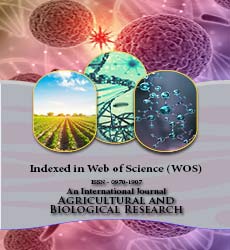Agricultural and Biological Research
RNI # 24/103/2012-R1
Mahendra Kr. Yadav, Juri Das, Satyendra Kumar
Vegetables are an important component of human diet as they are the only source of nutrients, vitamins and minerals. They are also good remunerative to the farmer as they fetch higher price in the market. Likewise other crops, they are also being hit by the consequences of climate change such as global warming, changes in seasonal and monsoon pattern and biotic and abiotic factors. Climate change may be a change in the mean of the various climatic parameters such as temperature, precipitation, relative humidity and atmospheric gases composition etc. It can also be referred as any change in climate over time, whether due to natural variability or as a result of human activity. Under changing climatic situations crop failures, shortage of yields, reduction in quality and increasing pest and disease problems are common and they render the vegetable cultivation unprofitable. As many physiological processes and enzymatic activities are temperature dependent, they are going to be largely affected. Drought and salinity are the two important consequences of increase in temperature worsening vegetable cultivation. Increase in CO2 may increase crop yields due to increased CO2 fertilization, but decreases after some extent. Anthropogenic air pollutants such as CO2, CH4 and CFC are contributing to the global warming and dioxides of nitrogen and sulphur are causing depletion of ozone layer and permitting the entry of harmful UV rays. These effects of climate change also influence the pest and disease occurrences, host-pathogen interactions, distribution and ecology of insects, time of appearance, migration to new places and their overwintering capacity, there by becoming major setback to vegetable cultivation. Among the all vegetables, is most vulnerable to climate change due to its exact climatic requirement for various physiological processes.
